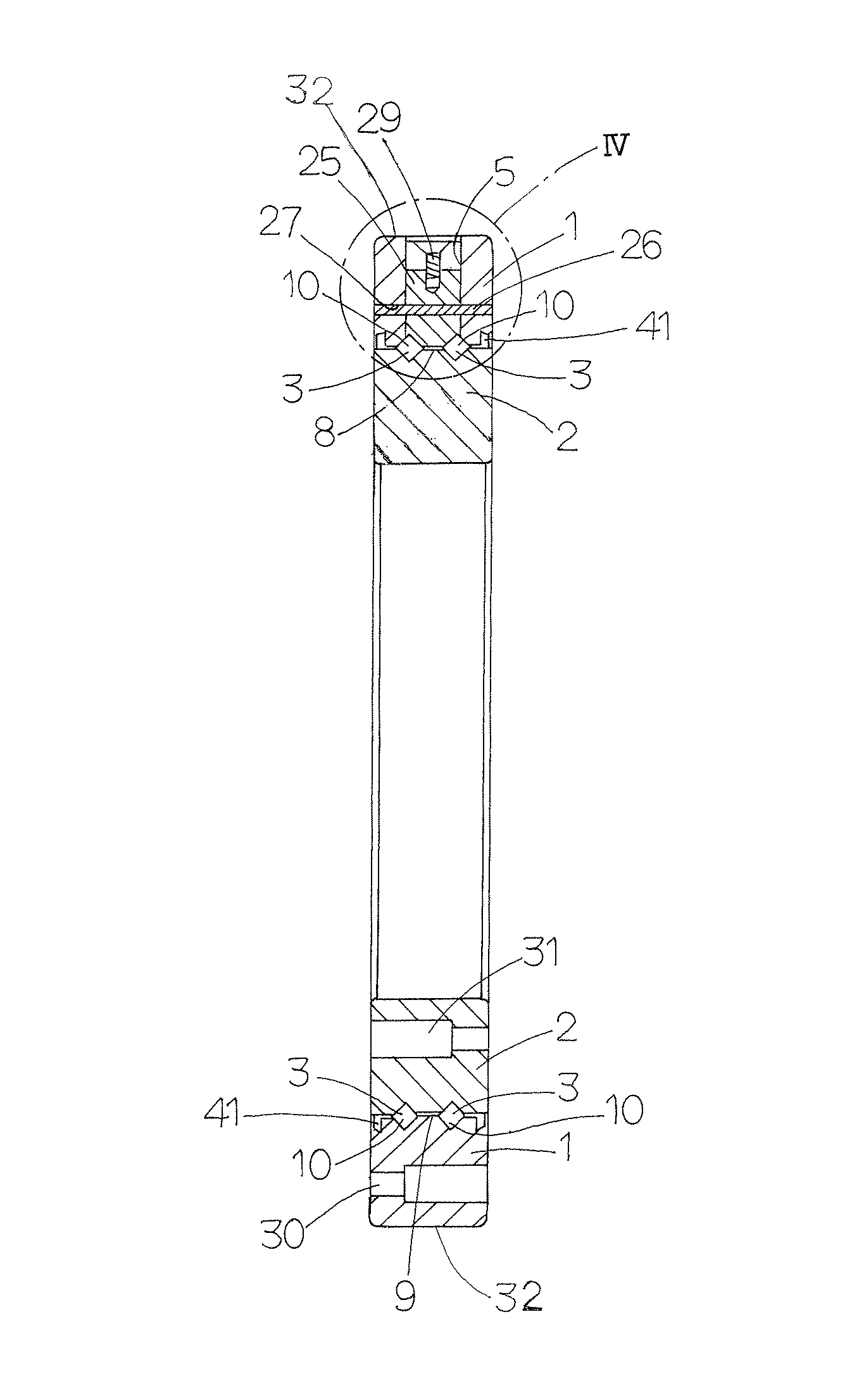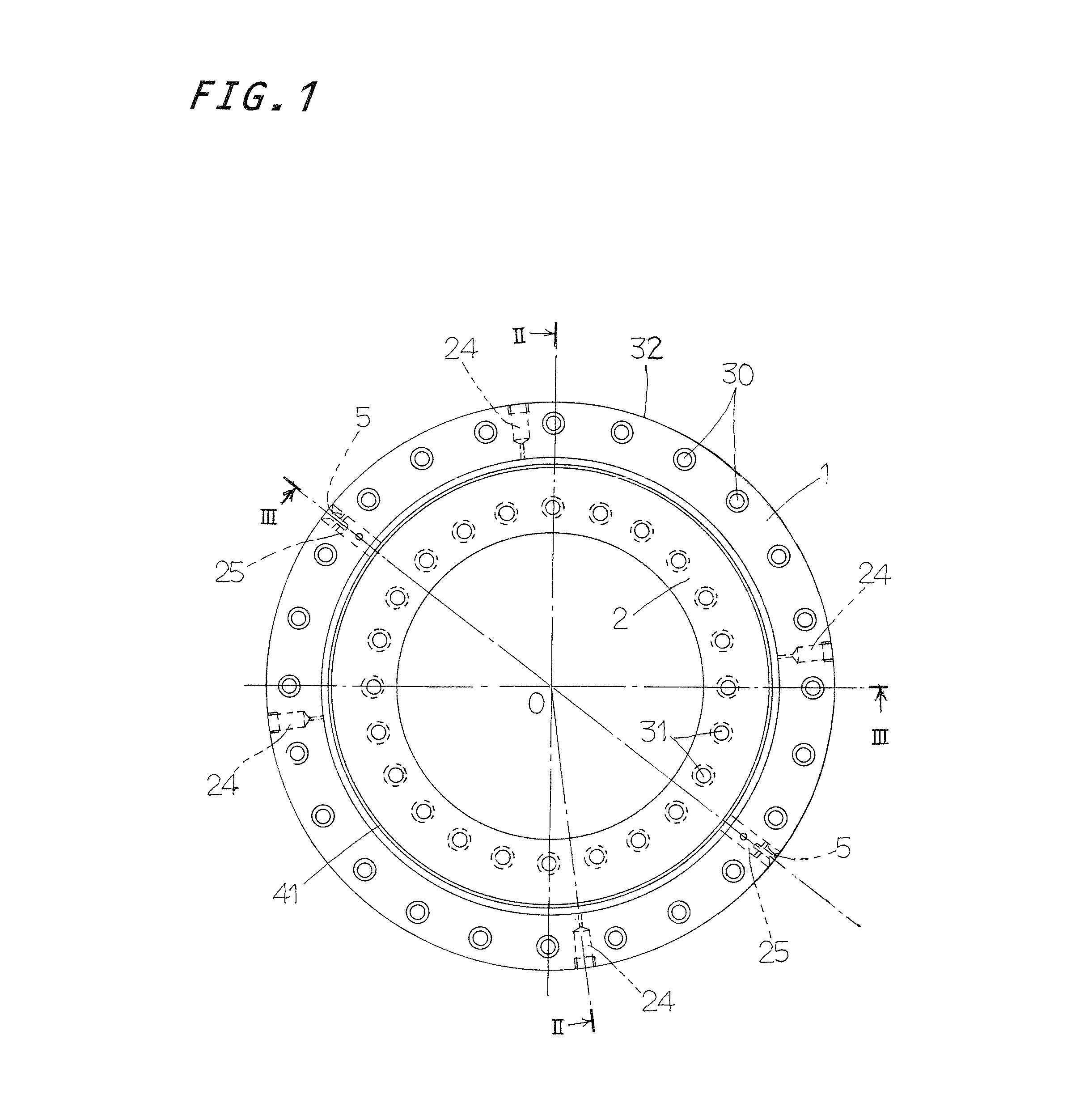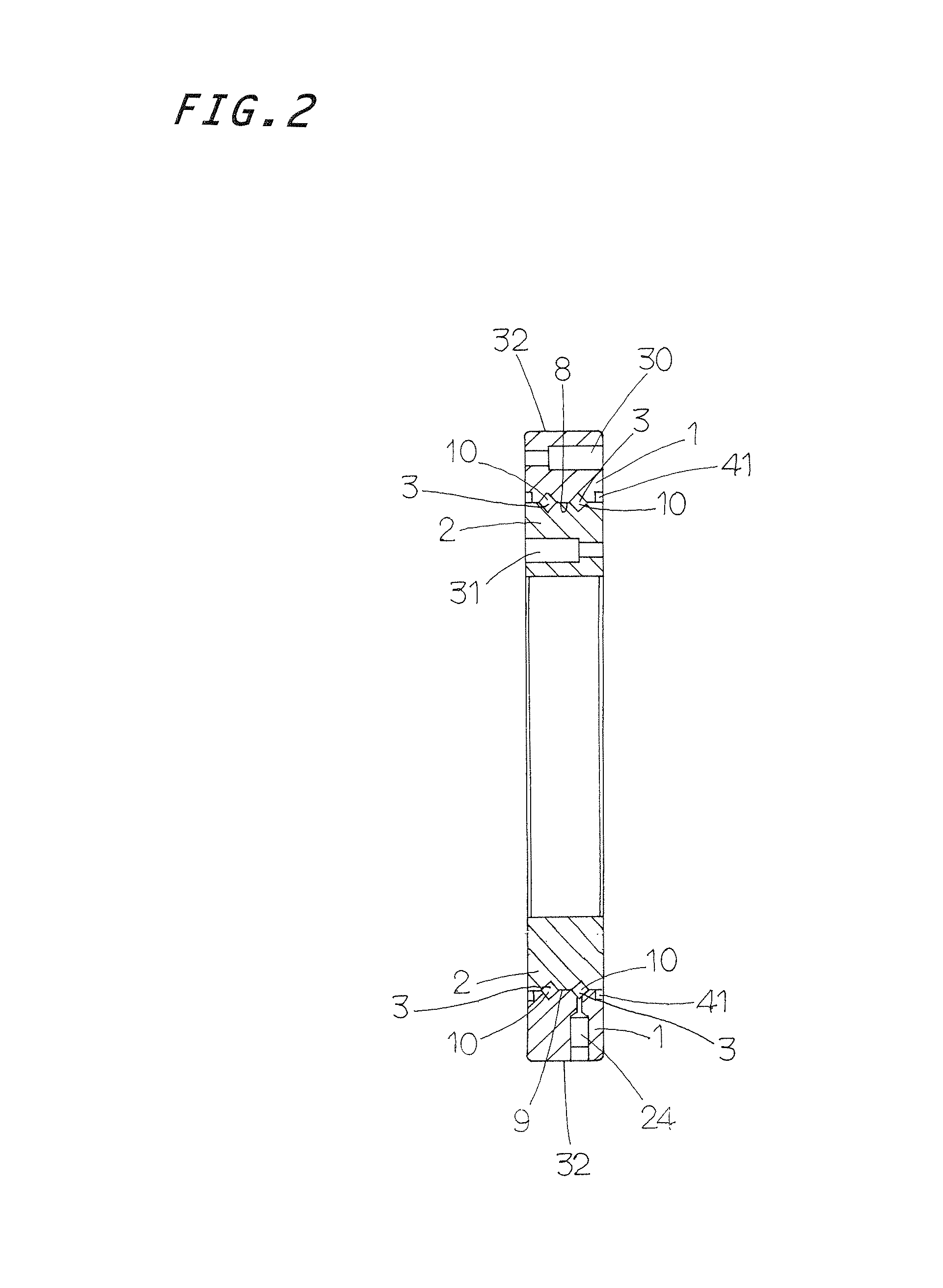Turning bearing with rollers between outer ring and inner ring
a technology of turning bearing and inner ring, which is applied in the direction of bearings, shafts and bearings, rotary machine parts, etc., can solve the problems of large frictional resistance and remain a major challenge, and achieve the effect of reducing frictional resistance, improving the load rating of bearings, and effectively protecting against foreign materials
- Summary
- Abstract
- Description
- Claims
- Application Information
AI Technical Summary
Benefits of technology
Problems solved by technology
Method used
Image
Examples
Embodiment Construction
[0035]A preferred embodiment of the turning bearing with the rollers lying between outer ring and the inner ring of the present invention will be explained in detail with reference to the accompanying drawings. The turning bearing constructed according to the present invention will find extensive applications in relative turning, rocking and turning systems used in a diversity of machinery including semiconductor fabricating equipments, precision machines, measurement / inspection equipments, medical appliances, industrial robots, various assembling machines, conveyor machines, machine tools, micromachines and so on.
[0036]Referring to FIGS. 1 to 4, the turning bearing is in general composed of an outer ring 1, inner ring 2, and rollers 3 and separators 4 (see FIG. 8) lying in raceways 10 defined between the outer ring 1 and the inner ring 2, the separators 3 being disposed between the rollers adjoining each other. The turning bearing is a double-row angular-contact roller bearing in w...
PUM
 Login to View More
Login to View More Abstract
Description
Claims
Application Information
 Login to View More
Login to View More - R&D
- Intellectual Property
- Life Sciences
- Materials
- Tech Scout
- Unparalleled Data Quality
- Higher Quality Content
- 60% Fewer Hallucinations
Browse by: Latest US Patents, China's latest patents, Technical Efficacy Thesaurus, Application Domain, Technology Topic, Popular Technical Reports.
© 2025 PatSnap. All rights reserved.Legal|Privacy policy|Modern Slavery Act Transparency Statement|Sitemap|About US| Contact US: help@patsnap.com



